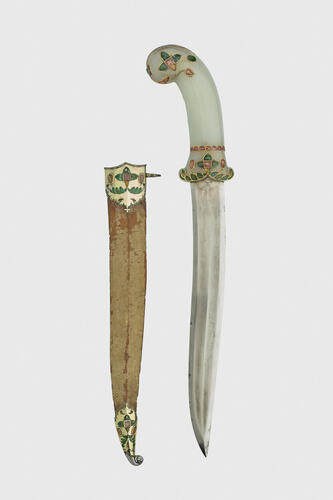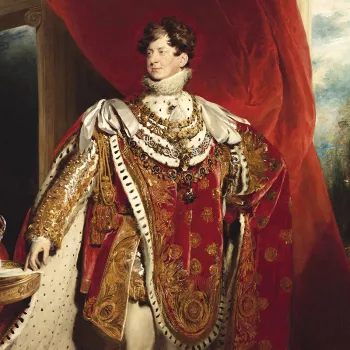Dagger and scabbard eighteenth century
Jade, gold, silver, steel, enamel, wood, rubies, emeralds and textile | RCIN 11508

? Indian; Mughal
Dagger and scabbard eighteenth century
-
A dagger or khanjar with a recurved two-edged steel blade and a jade hilt inlaid with emeralds, rubies and other precious stones arranged in a floral pattern and trees. The stones inlaid using a unique Indian method called kundan, which translates to pure gold. This technique of using strips of 22-24 carat gold secures the gemstone to the metal framework, or in this example jade, using pressure rather than head and is still practiced today in India. The scabbard decorated with silver mounts and inlaid with precious stones and the finial of the scabbard mount terminates in a bird's head. Ornate daggers such as this example for worn and in India to symbolise status as well as exchanged as gifts.
Provenance
Presented to George IV, when Prince of Wales on 21 July 1807 by Francis Seymour, second Marquis of Hertford. The Carlton House Arms and Armour inventory records that the dagger is from the 'East Indias'.
-
Creator(s)
Acquirer(s)
-
Medium and techniques
Jade, gold, silver, steel, enamel, wood, rubies, emeralds and textile
Category
Object type(s)








